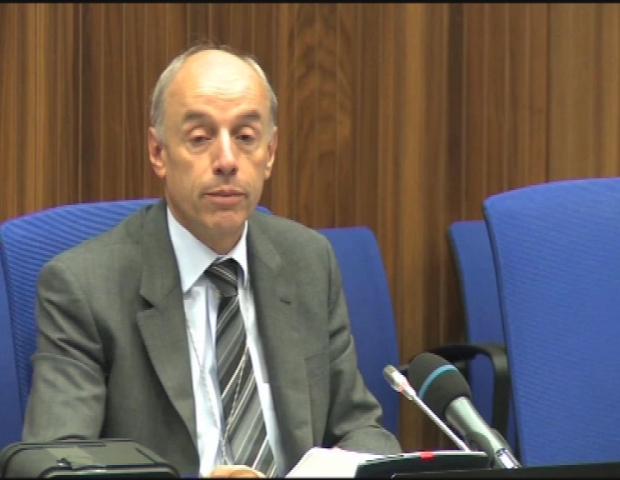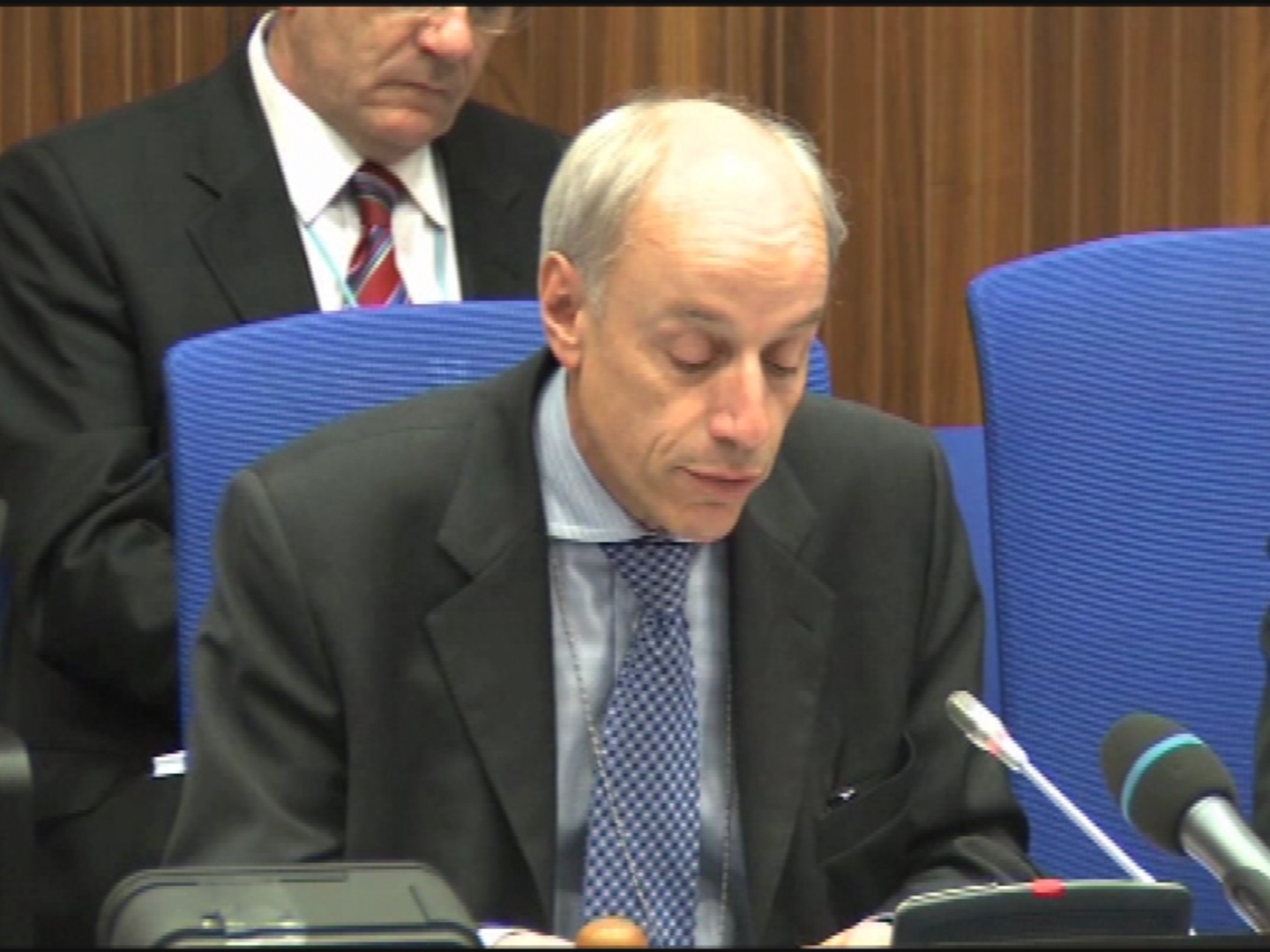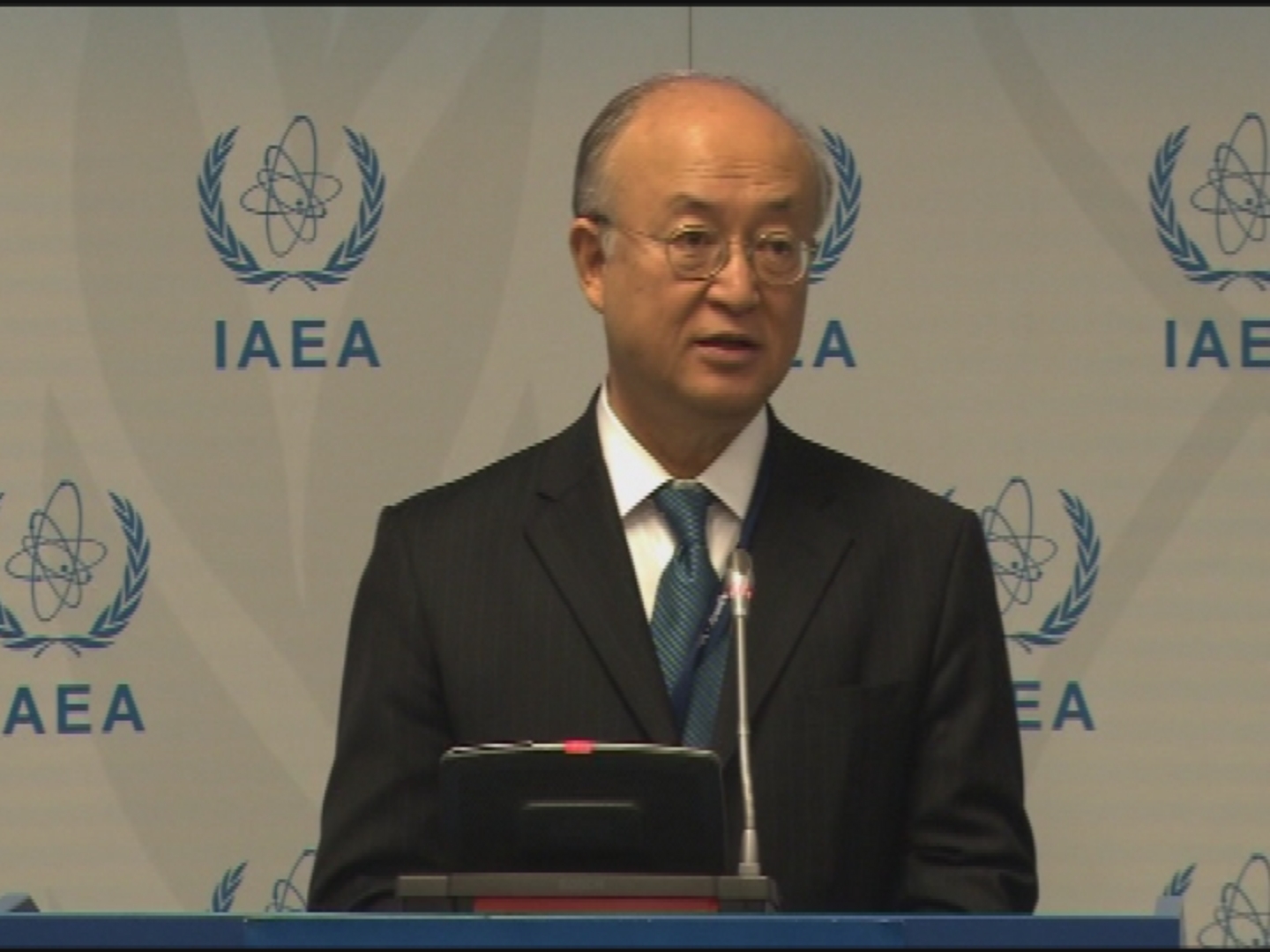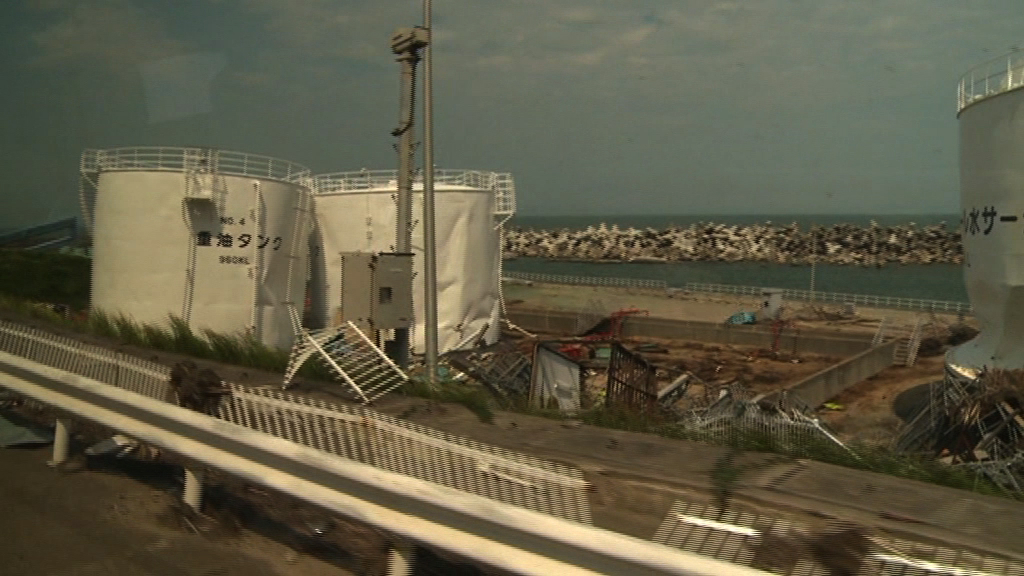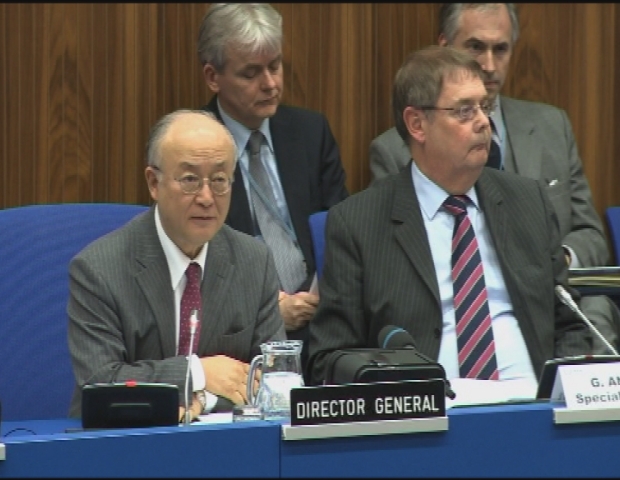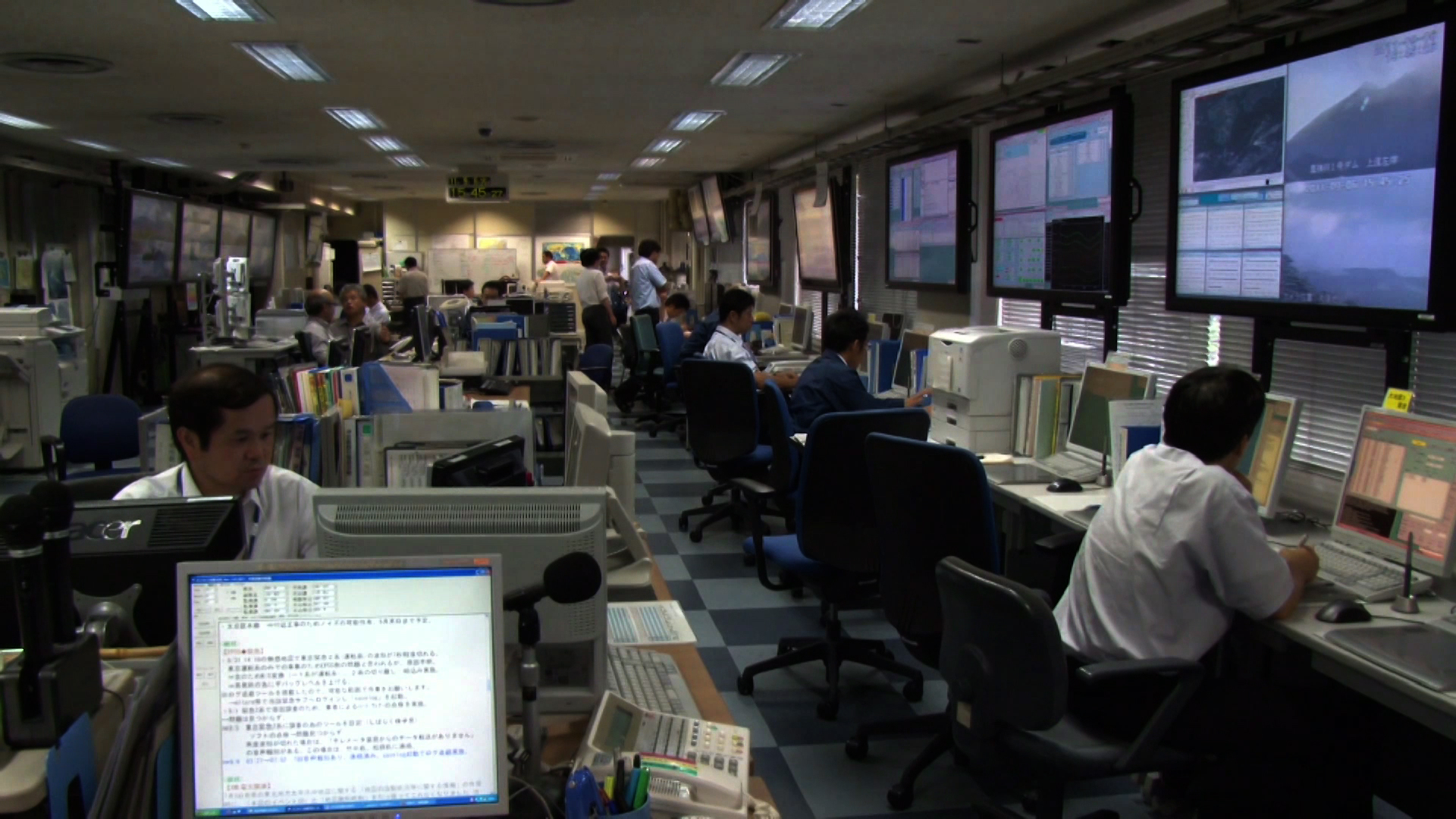CHERNOBYL / ANNIVERSARY ADVANCER
Download
There is no media available to download.
Share
IAEA / UKRAINIAN NATIONAL TV
STORY: CHERNOBYL / ANNIVERSARY ADVANCER
TRT: 2.52
SOURCE: IAEA / UKRAINIAN NATIONAL TV
RESTRICTIONS: NONE
LANGUAGE: NATS
DATELINE: RECENT
IAEA - OCTOBER 2010, PRIPYAT, UKRAINE
1.Zoom in, Chernobyl Nuclear Power Plant from rooftop in Pripyat
2.Wide shot, abandoned merry-go-round and Ferris wheel in abandoned amusement park
3.Med shot, disused bumper car
4.Zoom out, ferris wheel
5.Tracking shot, abandoned apartment, piano
6.Pan left, abandoned apartment, living room to kitchen
IAEA - OCTOBER 2010, ZAPOVEDNIK, BELARUS
7.Med shot, van entering Chernobyl Exclusion Zone
8.Wide shot, ‘trefoil’ radiation symbol
9.Close up, ‘trefoil’ radiation symbol
10.Wide shot, workers taking soil samples for radioactivity testing
11.Close up, workers putting soil samples for radioactivity testing into plastic bag
12.Close up, workers taking tree samples for radioactivity testing
13.Close up, radiation testing
IAEA - OCTOBER 2010, OUTSIDE OF CHERNOBYL NUCLEAR POWER PLANT
14.Wide shot, trucks transporting radioactive waste
15.Wide shot, worker testing levels of radioactivity in truck delivering waste
16.Tilt up, Chernobyl sarcophagus, Unit 4
17.Wide shot, construction trucks at New Safe Confinement Shelter at Unit 4
18.Zoom out, Chernobyl Nuclear Power Plant
UKRAINIAN NATIONAL TV – 20 APRIL 2011, CHERNOBYL, UKRAINE
19.Video animation of New Safe Confinement Shelter
20.Wide shot, Chernobyl Nuclear Power Plant and memorial in the foreground
21.SOUNDBITE (English) Ban Ki-moon, United Nations Secretary-General:
“It is one thing to hear and to read about this Chernobyl disaster. It is another, totally different experience to look for myself, to experience.”
22.Med shot, Chernobyl Nuclear Power Plant and memorial in the foreground
23.SOUNDBITE (English) Ban Ki-moon, United Nations Secretary-General:
“The Fukushima Daiichi nuclear power accident, and together with this Chernobyl disaster have given us enough and strong message, and we have to learn from these lessons.”
IAEA - OCTOBER 2010; STRELICHEVO, BELARUS
24.Pan right, Strelichevo School
25.Close up, students
26.Close up, students
27.Med shot, teacher and students departing school
In April 1986, a newly built Soviet city of 50,000 disappeared nearly overnight. Prypiat, roughly 2 kilometres from the Chernobyl Nuclear Power Plant, ranks among the eeriest, most dangerous ghost towns on the planet.
Residents were forced to leave the city quickly after the Chernobyl accident, and many items were simply too large to transport during the evacuation.
In neighbouring Belarus, large portions of its southern territory remain affected by high levels of radioactive contamination following the Chernobyl accident, the country is busily studying the development of plants and animal life to make decisions on land use and resettlement. To conduct this research, Belarus set aside 2,160 square kilometres of its territory in 1998 and established the Polesye Radiation Ecological Reserve (PSRER).
The reserve, seated squarely in the Belarusian Exclusion Zone, employs over 700 staff who perform tests to monitor radiation’s effects on flora and fauna.
Created soon after the accident, the Buryakivka site, in the Ukraine receives a steady stream of trucks bringing tonnes of low and intermediate level radioactive waste from the power plant site and elsewhere in the Exclusion Zone.
Trucks queue to enter the Buryakivka facility. Until recently the site was receiving roughly 15,000-17,000 cubic metres of waste per year, but the annual load rose last year to two or three times that amount because of excavation and other preparatory work for the New Safe Confinement shelter for Unit 4.
One of the world's largest and most complex construction projects is now underway at the Chernobyl Nuclear Power Plant site. Since the 1986 accident, concern has persisted about the structural integrity of the existing shelter, or sarcophagus. The original structure was built under hurried and dangerous conditions in the months following the reactor failure in 1986, but was only meant to last ten years. Instability of the structure is a major problem due to the possibility of collapse, which might lead to a possible release of radiation from fuel masses still inside the damaged reactor.
The shelter that was erected in 1986 as a temporary construction to house the reactor and the waste will be reconstructed and remediated. The IAEA provided technical advice on the shelter's design and training on managing residual material, thus reducing the risks and environmental impact, while increasing the safety of the reconstruction effort.
Construction of a new structure, the New Safe Confinement, has begun on site. Once completed, the new structure will confine the reactor for the coming century and will allow for longer-term safety and decommissioning of unit 4.
Making the first visit by a United Nations (UN) Secretary-General to Chernobyl, Ban Ki-moon paid tribute last week to the many victims of the disaster and called for a new chapter to begin in the areas still affected.
Ban, accompanied by Ukrainian President Viktor Yanukovych, told a press conference about the impact of seeing the Chernobyl disaster site in person and said that Chernobyl and the recent accident at the Fukushima Daiichi Nuclear Power Plant have provided “lessons” for strengthening nuclear safety standards.”
Meanwhile, the town of Strelichevo in Belarus is placing renewed effort into its revitalization by offering housing subsidies and encouraging families to move there.
An elementary-level school for over 100 children was re-opened earlier this decade. Children are educated about the accident and learn about its consequences. Growing up in a Chernobyl-affected region does present challenges. Children are given lessons on the basics of radiation, how to live a healthy lifestyle, and warnings on eating certain locally grown foods.
The school offers a full range of courses and activities and completes an annual medical examination of each student.

